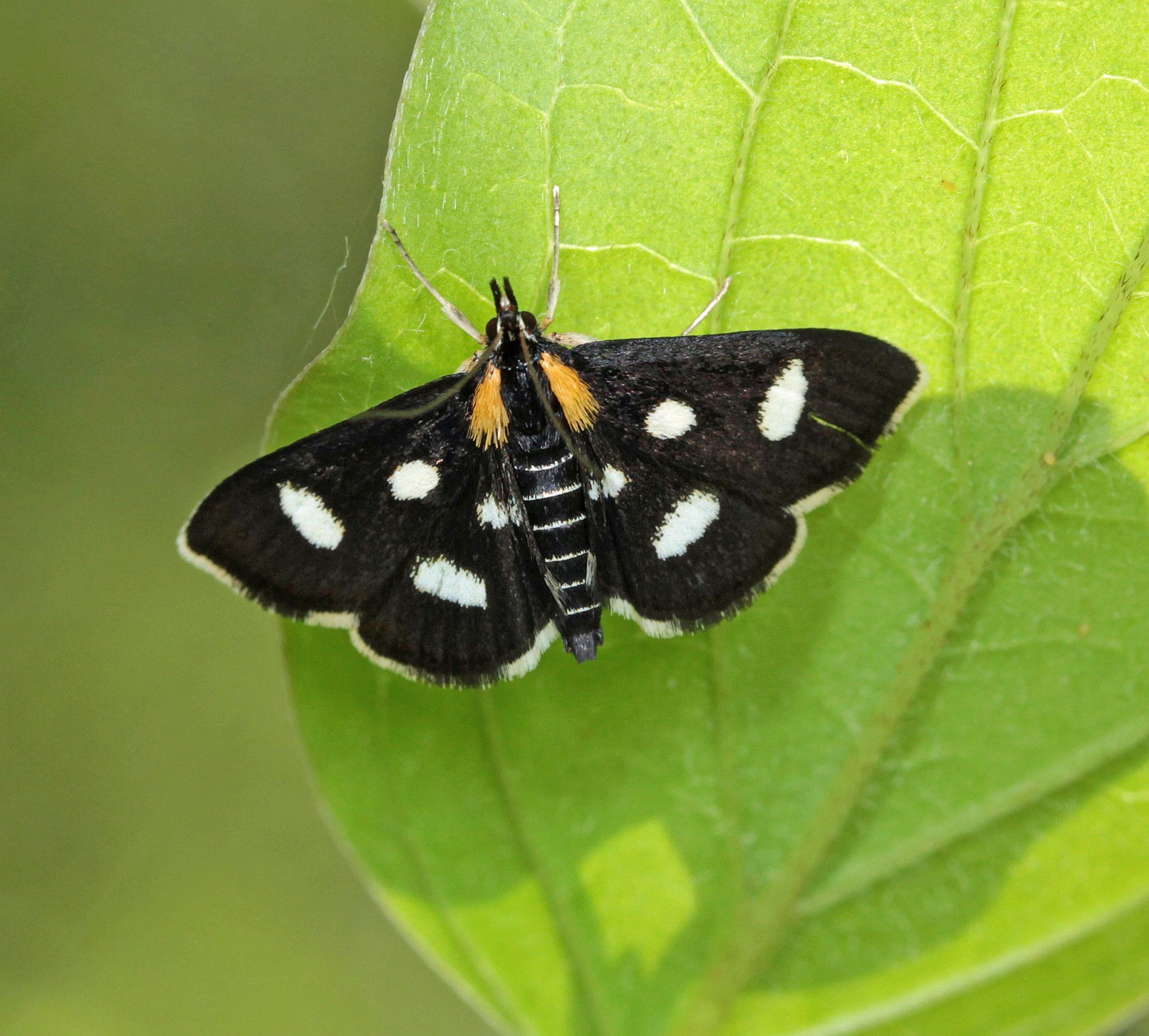Leading wildlife charity Butterfly Conservation is celebrating the discovery of a new breeding group of rare White-spotted Sable moth near Canterbury.
The exciting discovery was made by Butterfly Conservation staff and volunteers during a survey of Clowes Wood near Canterbury, Kent, in the summer.
The team were searching for the moth’s caterpillars in the woodland, which is owned by Forestry England, after extensive woodland management had enabled an important native plant to thrive.
The work to the woodland had resulted in the growth of Goldenrod, the sole foodplant of the White-spotted Sable moth caterpillars, which needs plenty of natural light to grow.
Rebecca Levey, Kent’s Magnificent Moths Conservation Officer at Butterfly Conservation, said: “As part of the Kent’s Magnificent Moths project, we have been working to protect and increase two populations of this rare moth in Kent, including one at Blean Woods National Nature Reserve, which is where we think the moths have travelled from.
“This is a really exciting discovery as it shows that the moth is able to travel much further than we first thought and can colonise new habitats as they are created. It gives us great hope for the recovery of the White-spotted Sable and for many other species facing extreme decline.”
The moth is now only found in some areas of Scotland, Wales, Lancashire and Kent, with other very small populations potentially clinging on in Surrey and Sussex. Loss of habitat has caused the moth to become nationally scarce, with it becoming locally extinct in some areas, making the discovery of a new breeding population all the more important for the species’ survival.
In order to thrive, the White-spotted Sable needs the Goldenrod, which is a native ground flower, to feed on as a caterpillar. Goldenrod grows best in well-managed woodland with regular coppicing, glades and rides to allow natural light into the area. Without this woodland management there is a reduction in the Goldenrod and therefore a decline in the moths, as well as other species.
Kate Harris at Forestry England said. “For 20 years we have been managing woodland at Clowes to encourage the dispersion of the rare Heath Fritillary butterfly by widening rides and creating short-rotation open space.
“We are thrilled to see that this work is helping to support other species such as the White-spotted Sable. It shows the importance that careful woodland management can have for the UK’s declining wildlife.”
Rebecca Levey concluded: “The White-spotted Sable is one of the 40 species that eat Goldenrod and is a key indicator of the health of the habitat – if they are there, chances are some of the other species will be too. It proves that if we improve habitats, nature can respond and recover fast, and natural recolonisation can occur, which is fantastic.”
The White-spotted Sable is one of approximately 250 day-flying moths out of 2,500 species of moth in the UK. However, despite its striking appearance, it is only the size of a fingernail. Butterfly Conservation is asking people to keep their eyes peeled when in woodland where Goldenrod grows between May and June and report any sightings of the moth to the National Moth Recording Scheme or using the iRecord app.


